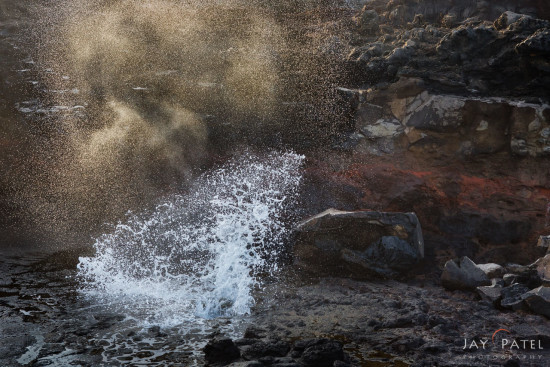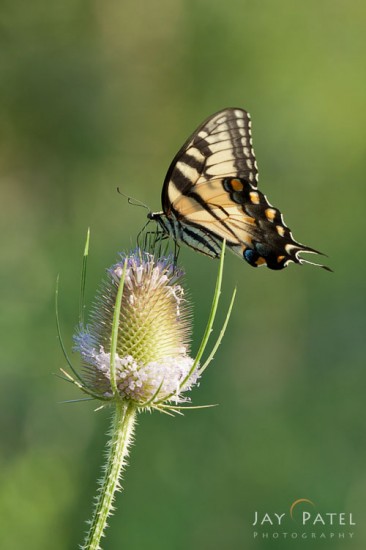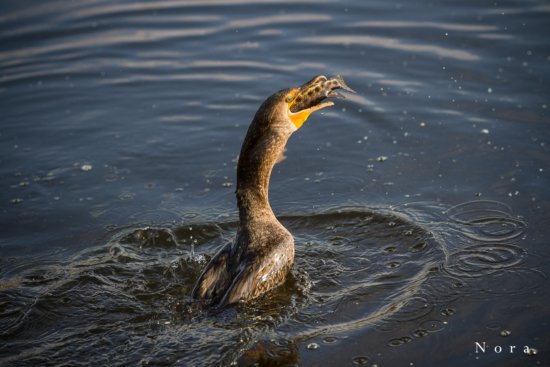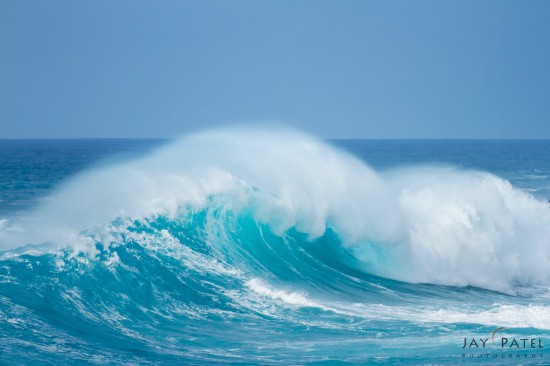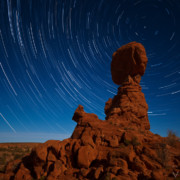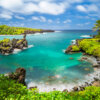How to Use Fast Shutter Speed for Nature Photography
Typically, nature photography is all about capturing silky smooth waterfalls, dreamy rivers, and long-exposure night skies with slow shutter speeds. But that doesn’t mean you can’t use fast shutter speed in nature photography to capture stunning and creative results. In fact, fast shutter speed opens up new possibilities for photographers who want to freeze motion, highlight details, and capture fleeting moments in wildlife and landscapes.
For example, while photographing a blowhole in Maui, Hawaii, I used a shutter speed of 1/500s to freeze the explosive burst of water. Instead of a blurry spray, the result was a sharp, abstract composition that revealed details invisible to the naked eye.
Using fast shutter speed for landscape and wildlife photography does present challenges. Exposure balance, focus accuracy, and creative choices become critical. Let’s dive into practical tips, techniques, and lessons you can use to master this approach.
Decide How You Want Motion to Appear
With enough light, a fast shutter speed can be applied to nearly any scene. But the way you want motion in nature photography to appear determines your approach.
- Freezing motion: A crashing wave, a bird taking off, or an animal in mid-stride.
- Creative blur: Using a slightly slower “fast” shutter speed, like 1/500s, to blur a hummingbird’s wings while keeping its body sharp.
- Abstract details: Exploding mud bubbles in Iceland or water droplets from a blowhole.
One challenge is photographing subjects that move unpredictably. For instance, capturing a butterfly with a telephoto lens can be difficult since the narrow field of view makes it hard to track. My solution? Observing behavior. I noticed the butterfly repeatedly returned to the same flower, set up my tripod like a gimbal, pre-focused, and waited for the perfect moment. This type of anticipation and creative workflow in nature photography is often as important as camera settings.
Mastering Focus with Fast Shutter Speed
Using a fast shutter speed for wildlife photography or abstract nature shots only works if your subject is sharply in focus. This is often the most difficult part when working with moving subjects.
1. Pre-Focus for Predictable Subjects
If your subject appears in a predictable location, like mud pot bubbles in Iceland, set your focus in advance. After determining where the bubble would most likely pop, I locked my DSLR lens in manual focus. That way, I didn’t waste time refocusing during the fleeting moment.
2. Use Focus Tracking Mode for Wildlife
When photographing moving subjects—birds, running animals, or insects—you’ll need to rely on autofocus tracking in nature photography. For example, my daughter Nora used focus tracking in Everglades National Park to capture a cormorant catching a fish. By keeping the bird’s eye in focus through her viewfinder, she fired off a burst of images as the action unfolded.
Choosing the Right Shutter Speed for the Subject
Your choice of shutter speed in nature photography depends entirely on the subject’s speed and your creative intention.
- 1/400s – Enough to freeze a slow-moving sea turtle underwater.
- 1/500s – Freezes water spray from a blowhole or adds slight wing blur to hummingbirds.
- 1/2500s – Captures exploding mud bubbles in Iceland with crisp detail.
Remember, faster shutter speeds let you freeze motion but also reduce light entering your camera. You’ll need to adjust aperture and ISO to balance exposure. For instance, when shooting the blowhole in Hawaii, I pushed my ISO to 1600 to get the proper exposure. Checking your histogram is essential to avoid blown highlights or deep shadows.
Creative Uses of Fast Shutter Speed in Nature Photography
Perfect! Expanding the “Creative Uses” section and adding a “Mistakes to Avoid” section will make your blog richer and more SEO-friendly. I’ll weave in more long-tail and medium-tail keywords around fast shutter speed nature photography, creative wildlife photography, and mistakes to avoid with shutter speed.
Here’s the expanded version of those two sections:
Creative Uses of Fast Shutter Speed in Nature Photography
Using fast shutter speed creatively in nature photography goes far beyond just freezing motion. It allows you to capture fleeting details, experiment with abstract patterns, and showcase the wild beauty of nature in ways that slow shutter speeds cannot. Here are a few ideas to inspire your next outing:
- Freezing Splashes and Droplets
Water is one of the most fascinating elements to capture with high shutter speeds. Think of crashing ocean waves, water droplets suspended in mid-air, or even morning dew falling off a leaf. These frozen details create images full of energy and drama that the human eye can’t usually perceive. - Wildlife Action Photography
Fast shutter speeds are essential in wildlife photography—whether it’s an eagle swooping down for prey, a deer leaping through a meadow, or a bear fishing in a river. Freezing these split-second moments brings viewers into the heart of the action and helps tell a compelling story. - Bird Photography with Creative Blur
While many photographers aim to freeze every feather, sometimes leaving a touch of blur makes the photo more dynamic. For example, a shutter speed around 1/500s can freeze the bird’s body but allow wing motion blur, adding a sense of life and movement to your image. - Abstract Nature Photography
Sometimes the best way to use a fast shutter speed is not to show clarity, but to highlight texture and form. Think of exploding mud bubbles, spray from a blowhole, or sand kicked up by strong winds. By freezing these chaotic movements, you can transform natural elements into abstract art. - Macro Photography with Moving Subjects
Photographing insects or flowers in a breeze can be frustrating with slow shutter speeds. Using a faster setting (like 1/1000s or more) helps lock in sharpness even in unpredictable conditions, making your macro nature photography stand out.
Ultimately, creativity comes from asking: Do I want to freeze everything? Or do I want to selectively freeze and blur different parts of the subject to convey motion? The key is experimentation. Playing with these choices will set your work apart.
Mistakes to Avoid When Using Fast Shutter Speed
While fast shutter speed photography opens up many creative opportunities, it also comes with its own set of challenges. Here are common mistakes to watch out for, and how to avoid them:
- Underexposing Your Image
A fast shutter speed lets in less light, which can easily lead to dark or underexposed images. Always check your histogram and don’t be afraid to raise your ISO or open your aperture to achieve correct exposure. - Using Too High an ISO
Increasing ISO helps balance exposure, but going too high introduces noise, especially in low light. Know the limits of your camera’s sensor, and aim to keep ISO as low as possible without sacrificing sharpness. - Ignoring Depth of Field
Many photographers pair fast shutter speeds with wide apertures. While this helps with light, it also creates a very shallow depth of field. In wildlife photography with telephoto lenses, this can lead to sharp eyes but blurred wings or tails. Be mindful of what needs to stay sharp. - Not Tracking Your Subject Properly
Fast shutter speeds won’t save a poorly composed or out-of-focus image. Learn to anticipate motion, practice using continuous autofocus tracking, and keep your subject (especially the eyes) locked in focus. - Forgetting About Storytelling
Freezing motion is powerful, but it’s not always the most artistic choice. A waterfall shot at 1/2000s may look sharp but lifeless. Always ask yourself what you want to convey. Sometimes a slightly slower “fast” shutter speed with intentional blur tells a better story. - Relying Too Much on Burst Mode
High frame rate shooting helps capture action, but firing endlessly without purpose can clutter your memory card and make post-processing overwhelming. Be deliberate—combine anticipation with timing instead of spraying and praying.
By avoiding these pitfalls, you’ll not only sharpen your technical skills but also develop a stronger creative vision with fast shutter speed nature photography.
Final Thoughts
Fast shutter speed in nature photography is not just a technical choice—it’s a creative decision. By anticipating subject motion, practicing focus control, and experimenting with shutter speed values, you can capture breathtaking wildlife, abstract, and landscape images.
Next time you head into the field, challenge yourself to look beyond the standard long exposure shots. Experiment with fast shutter speeds to discover new perspectives and expand your creative portfolio.


